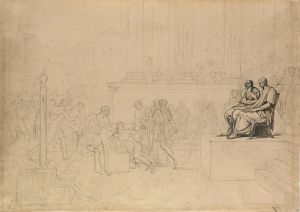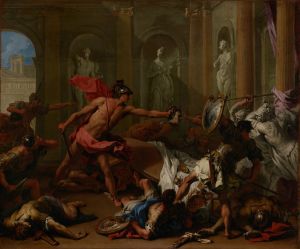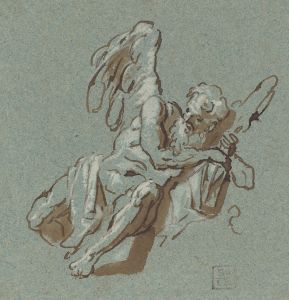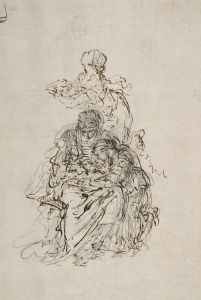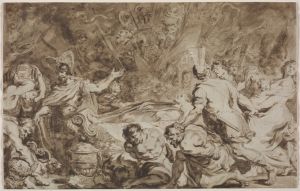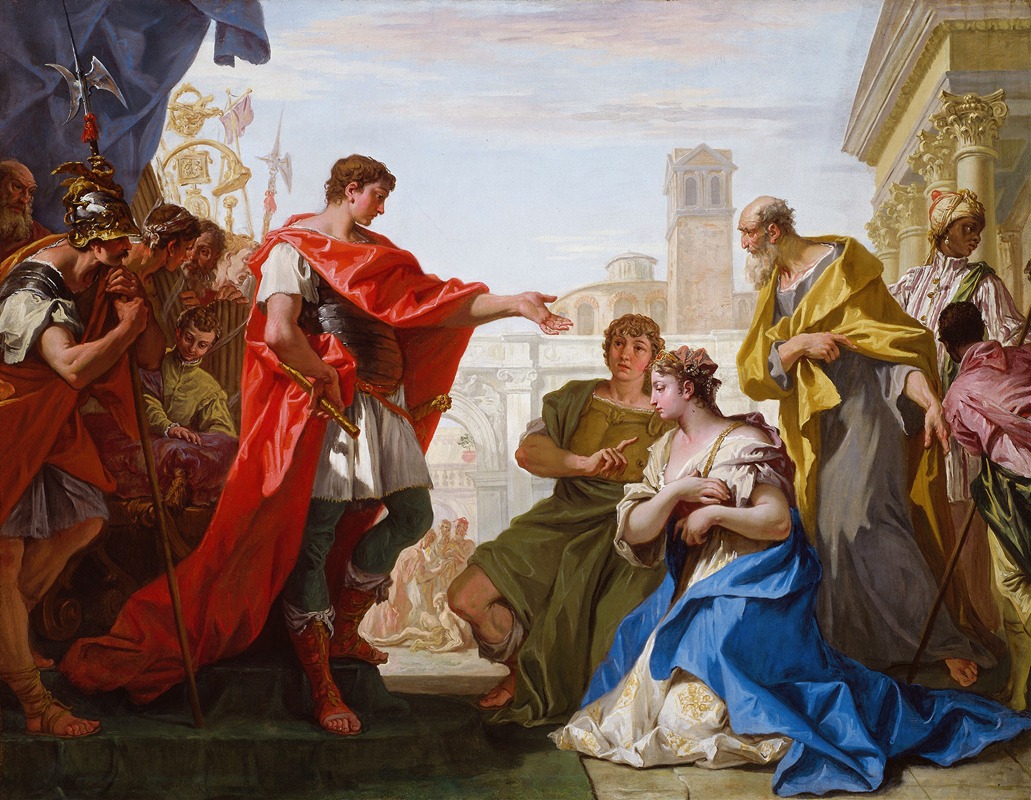
The Continence of Scipio
A hand-painted replica of Sebastiano Ricci’s masterpiece The Continence of Scipio, meticulously crafted by professional artists to capture the true essence of the original. Each piece is created with museum-quality canvas and rare mineral pigments, carefully painted by experienced artists with delicate brushstrokes and rich, layered colors to perfectly recreate the texture of the original artwork. Unlike machine-printed reproductions, this hand-painted version brings the painting to life, infused with the artist’s emotions and skill in every stroke. Whether for personal collection or home decoration, it instantly elevates the artistic atmosphere of any space.
The Continence of Scipio is a painting by the Italian artist Sebastiano Ricci, a prominent figure of the Venetian school during the late Baroque period. The artwork depicts a scene from the life of the Roman general Scipio Africanus, renowned for his military victories during the Second Punic War and his reputation for magnanimity and virtue.
The painting illustrates an episode recorded by ancient historians, including Livy and Valerius Maximus, in which Scipio demonstrates his moral integrity and self-restraint. After the Roman victory at the Battle of Baecula in 209 BCE, a beautiful young woman was brought to Scipio as a war prize. Upon learning that she was betrothed to a local nobleman, Scipio chose to return her to her fiancé, along with the ransom offered by her family. This act of generosity and respect for the couple’s bond enhanced Scipio’s reputation as a virtuous leader.
Sebastiano Ricci’s interpretation of this historical moment reflects the theatricality and dynamism characteristic of Baroque art. The composition is marked by dramatic gestures, vivid colors, and a sense of movement, all of which serve to heighten the emotional impact of the scene. Scipio is typically portrayed as a calm and noble figure, emphasizing his moral superiority, while the surrounding characters express a range of emotions, from gratitude to astonishment.
The exact date of the painting’s creation is not definitively documented, but it is generally attributed to Ricci’s mature period, when he was producing works for patrons across Europe. Ricci’s style during this time was heavily influenced by his exposure to the works of other Baroque masters, as well as the Venetian tradition of rich coloration and fluid brushwork.
The painting is housed in the National Gallery in London, where it is part of the museum’s collection of European art. It serves as an example of Ricci’s ability to combine historical narrative with the dramatic and decorative elements of Baroque painting. The work also reflects the broader cultural interest in classical antiquity during the 17th and 18th centuries, when stories from Roman history were frequently used as moral exemplars in art and literature.
As with many works of this period, the painting not only celebrates the virtues of its subject but also serves as a testament to the skill and creativity of its creator, Sebastiano Ricci, who played a significant role in the development of Venetian painting in the early 18th century.





